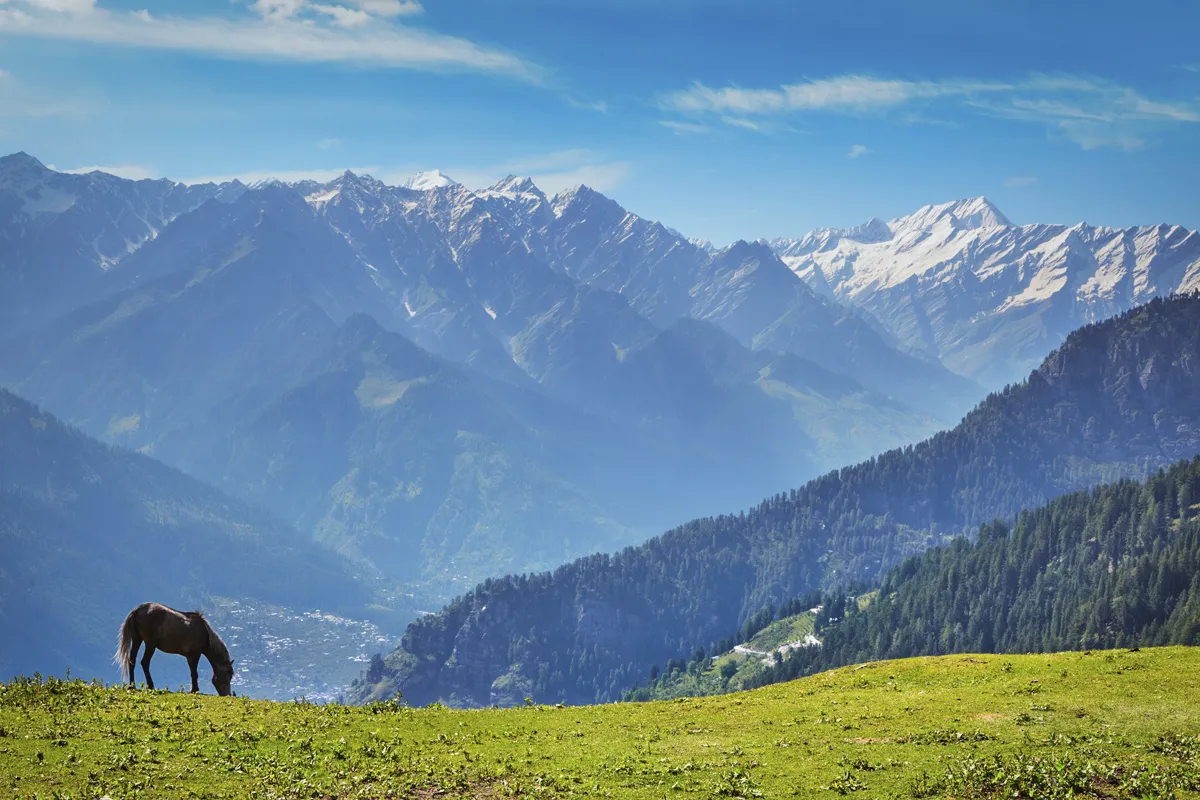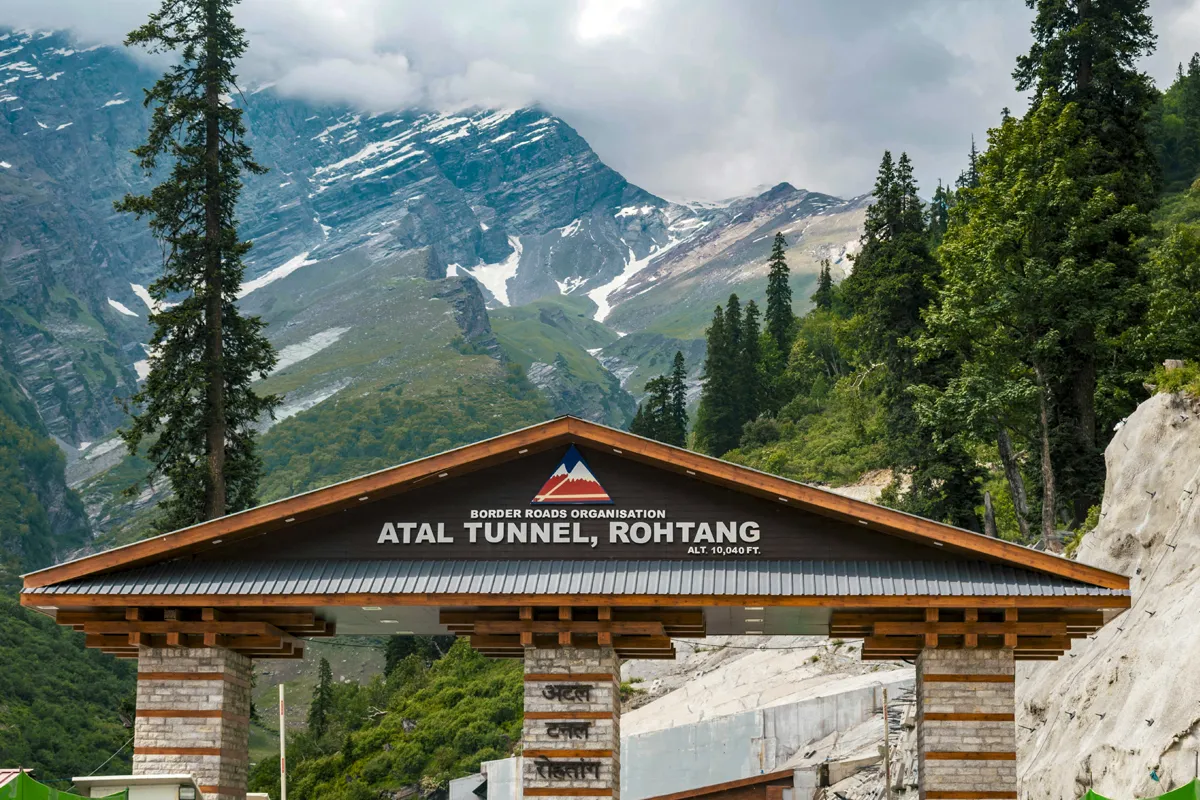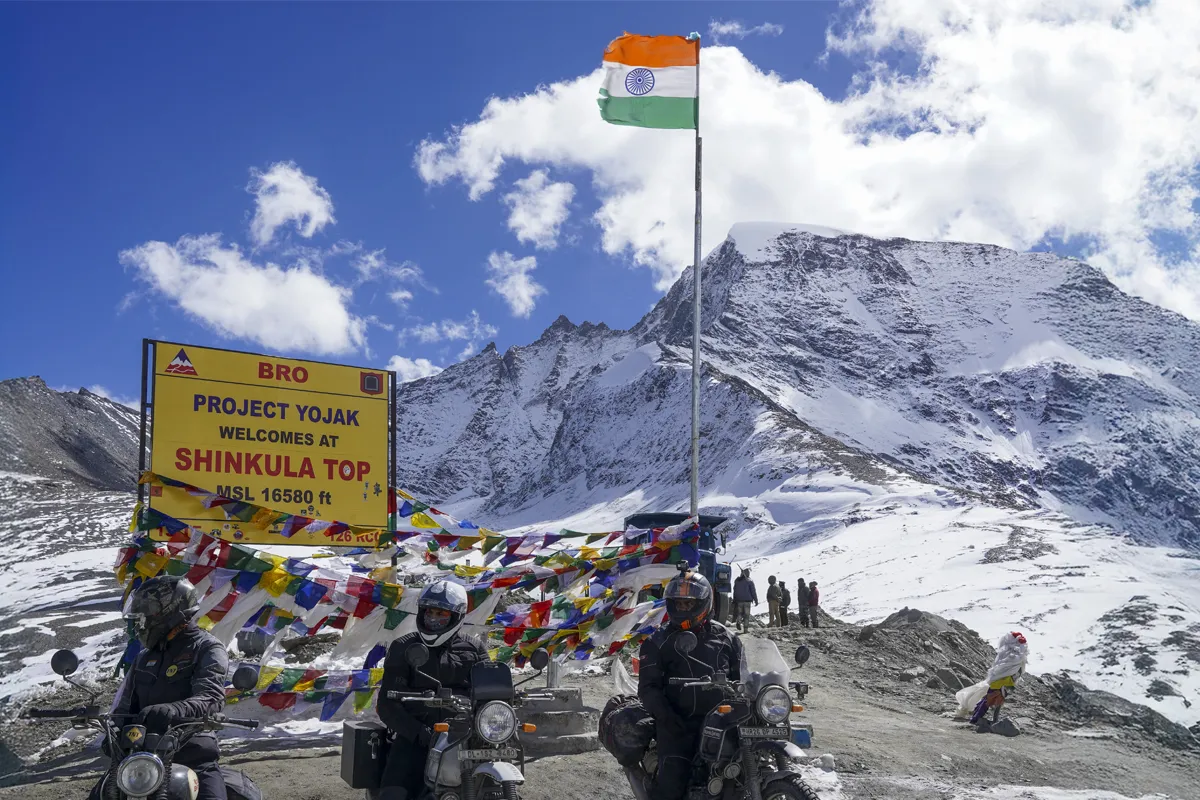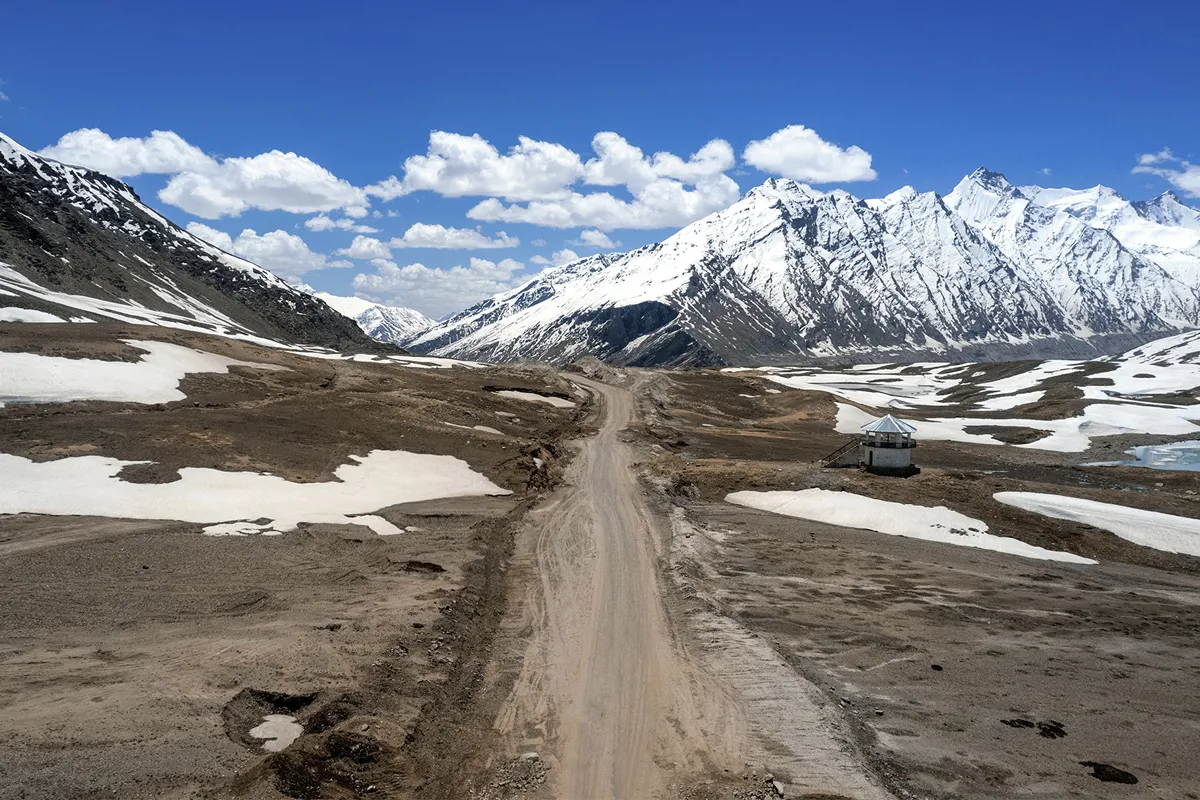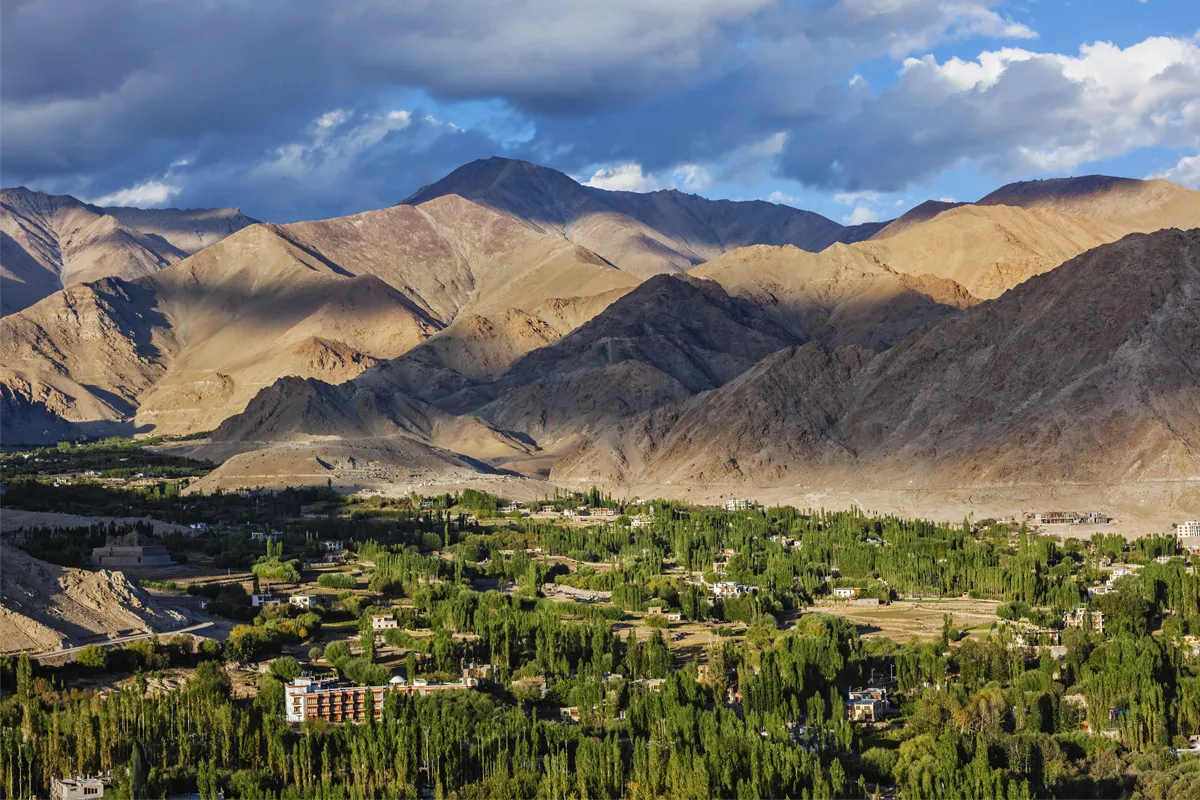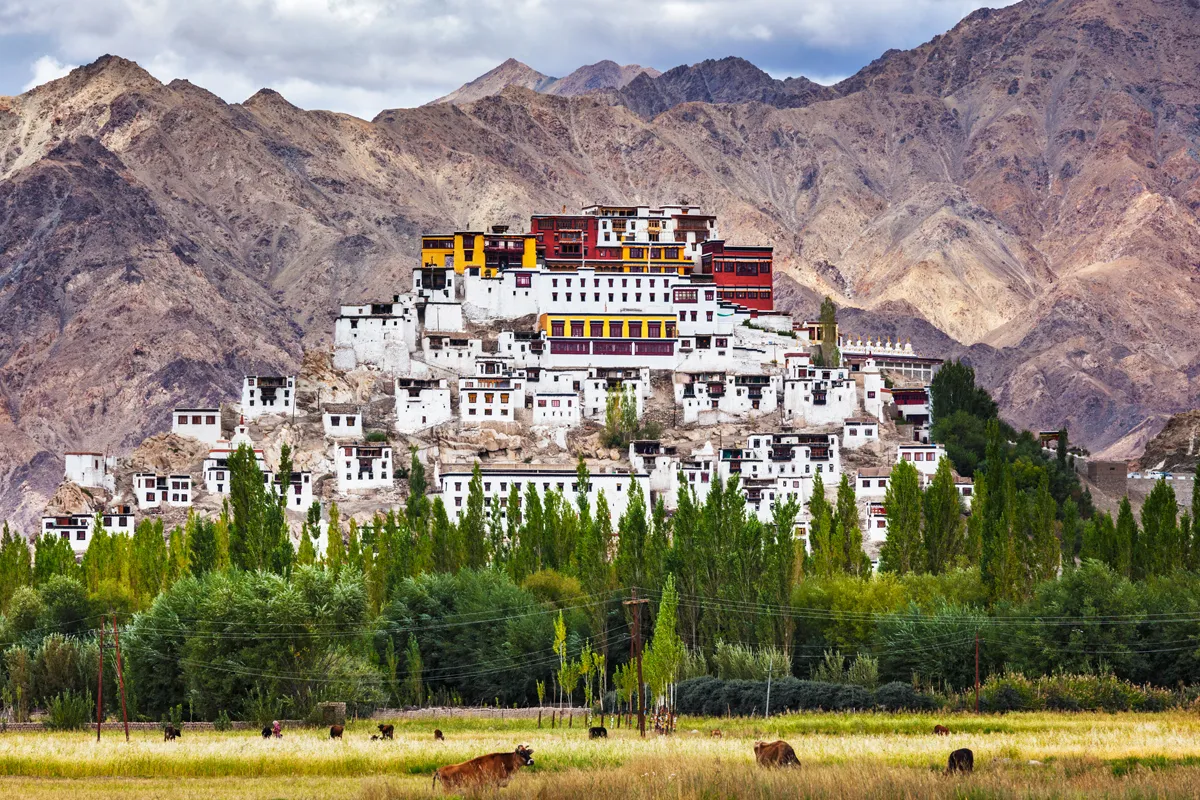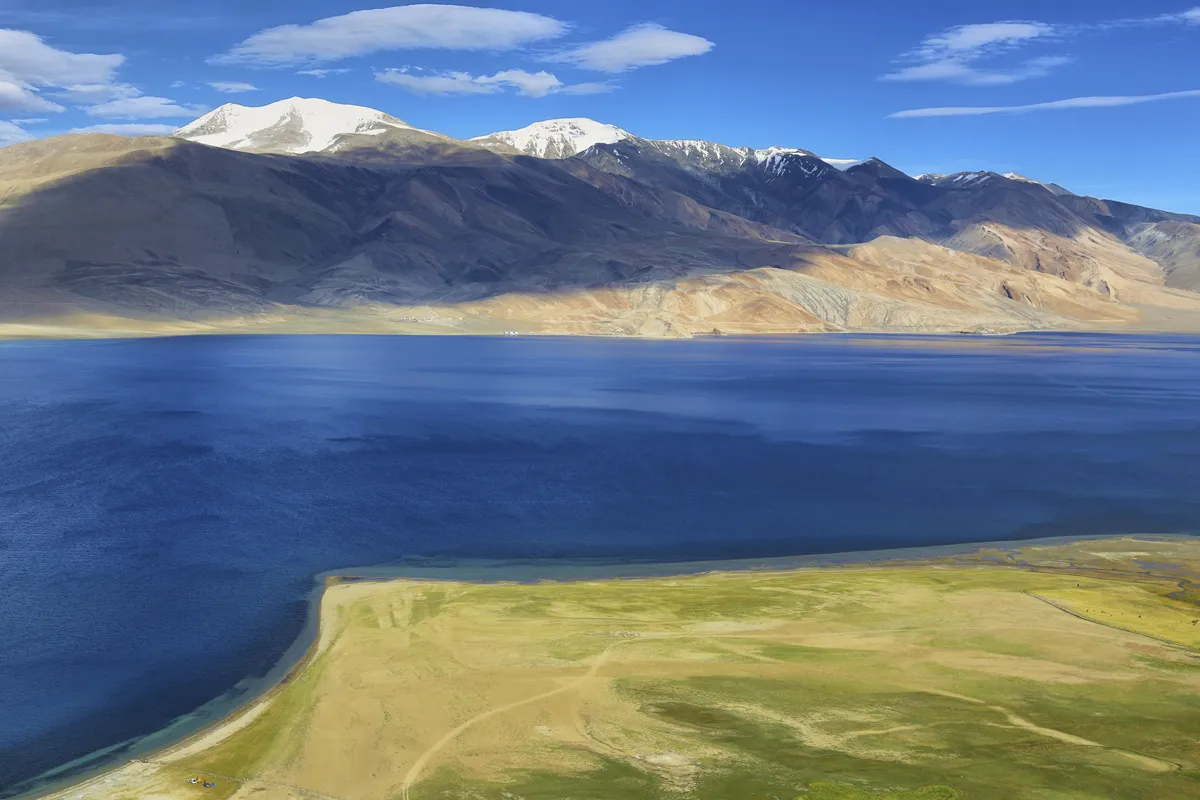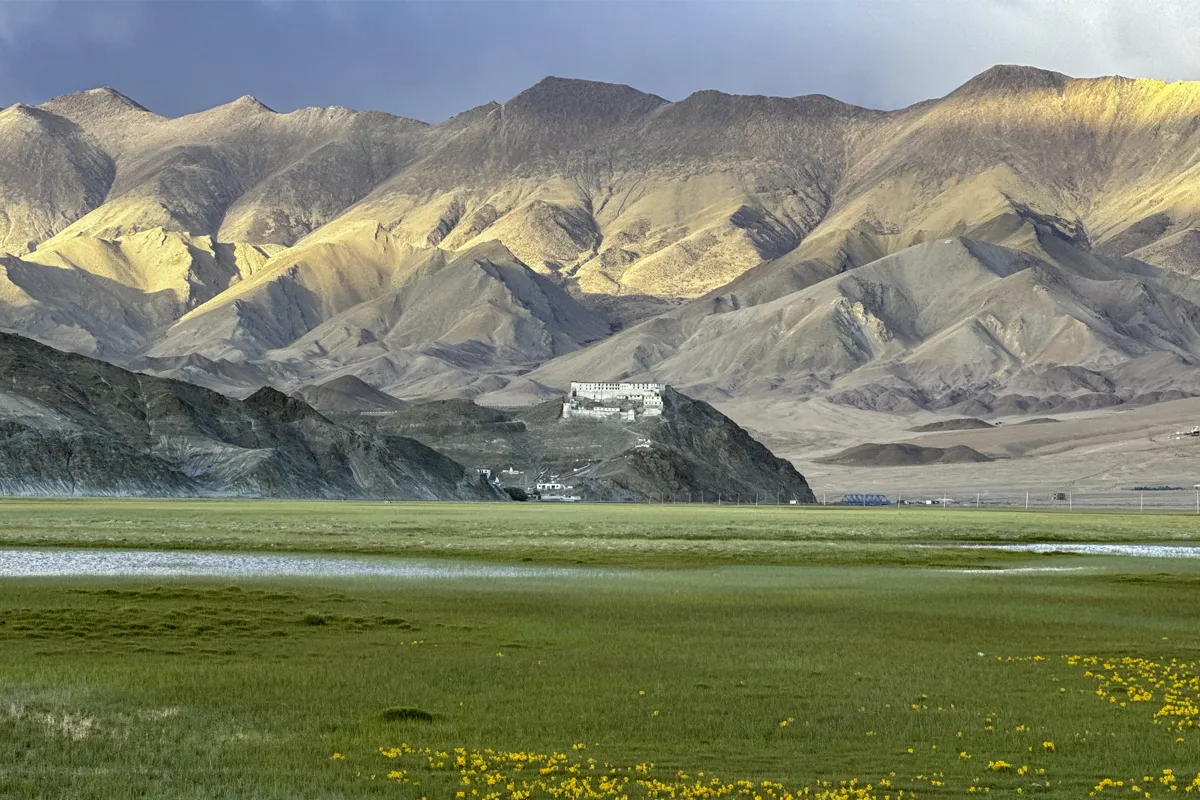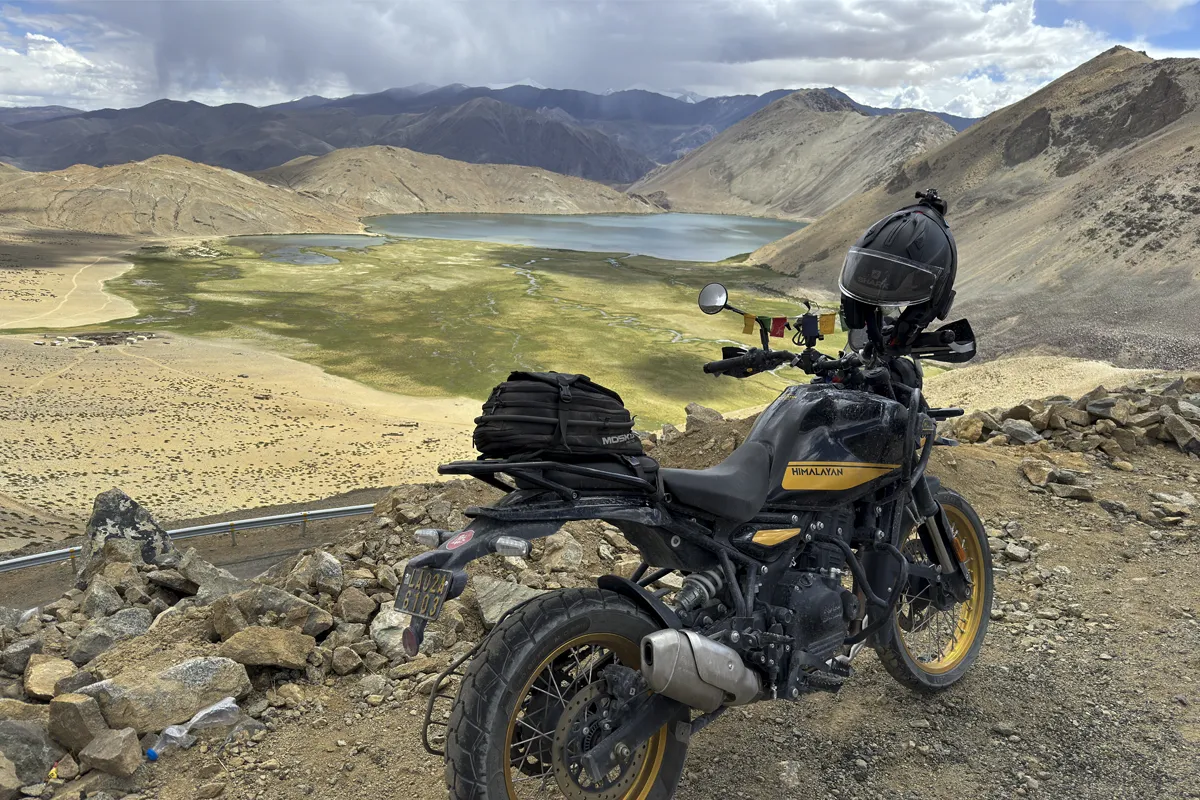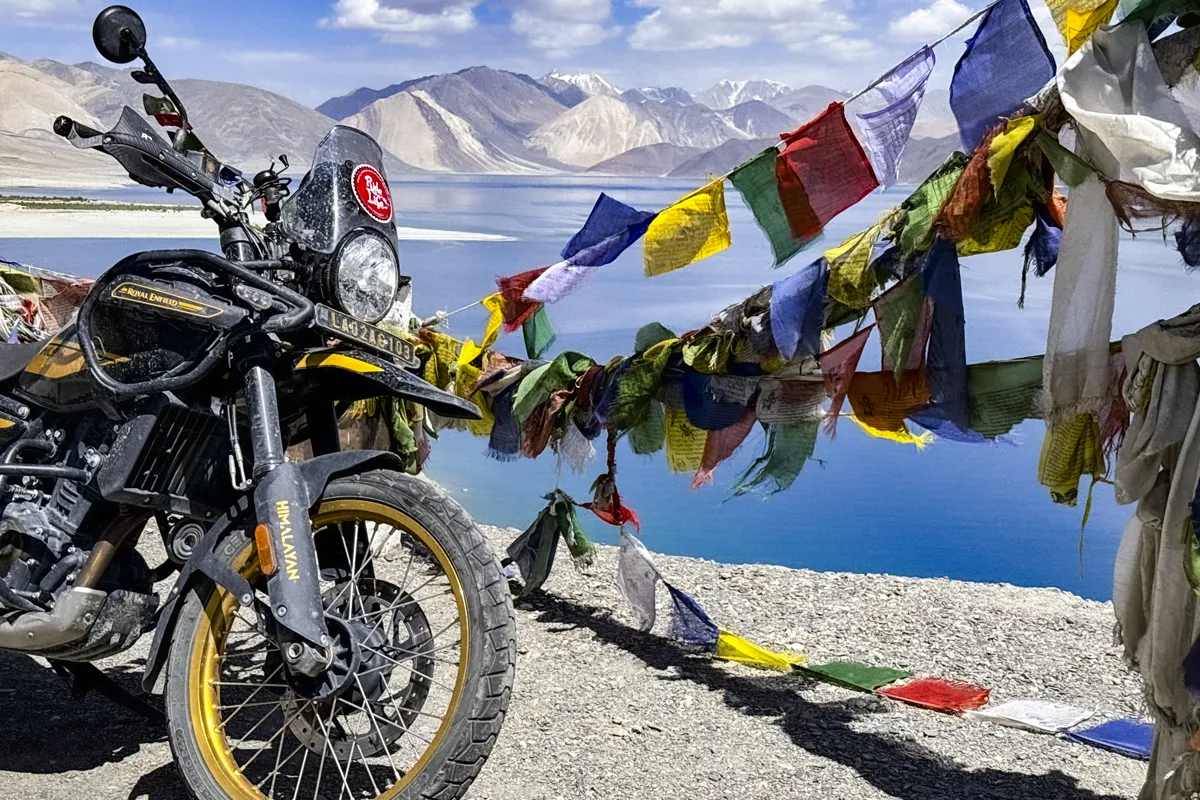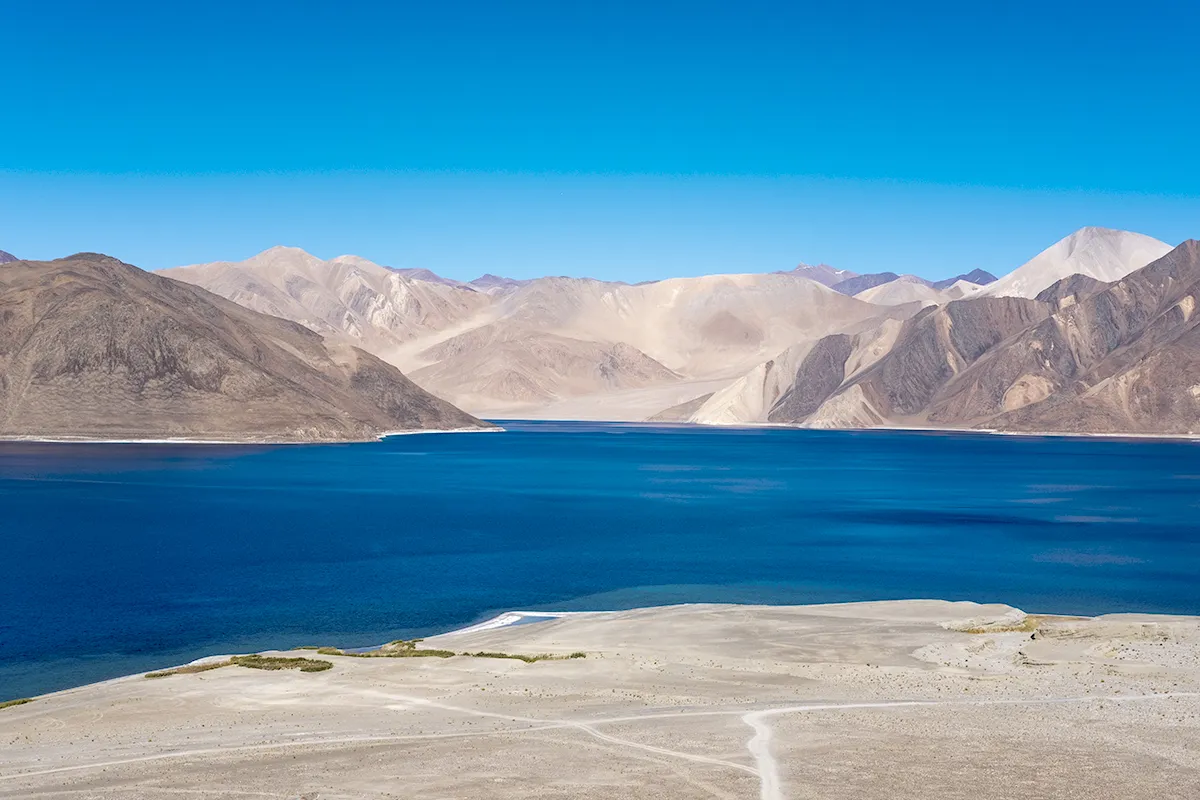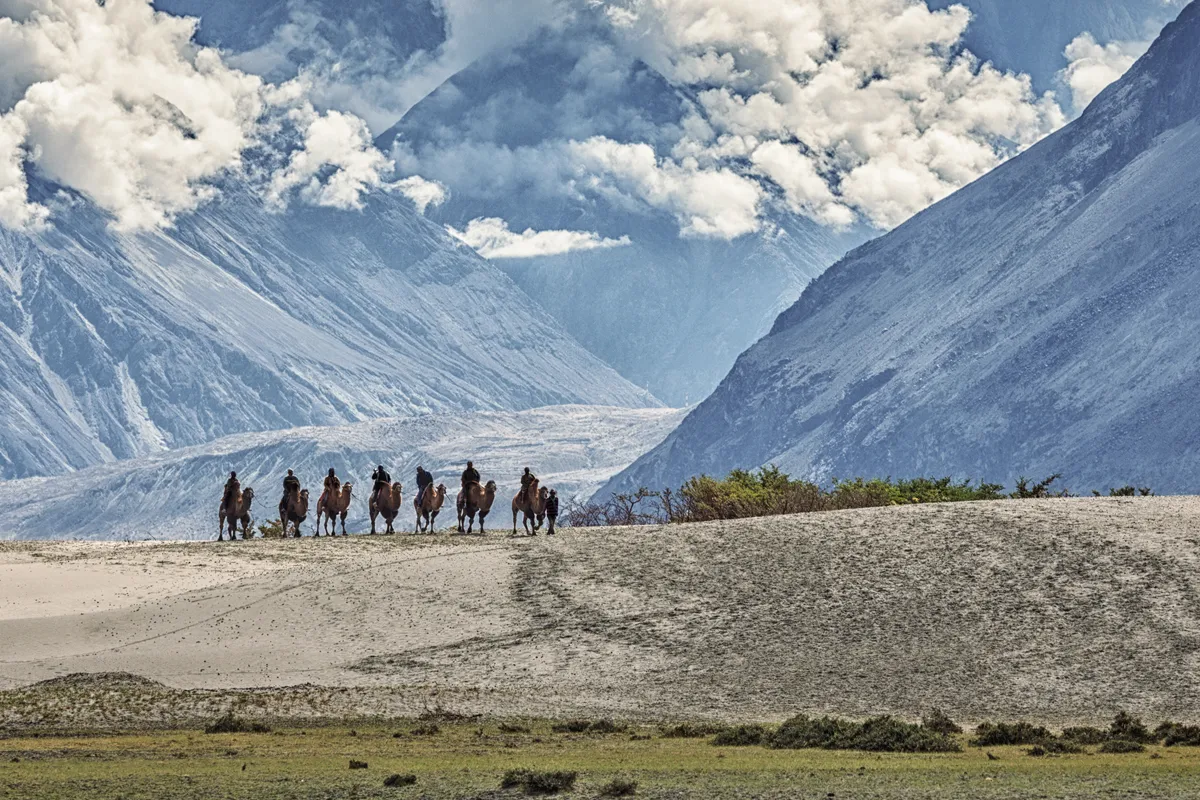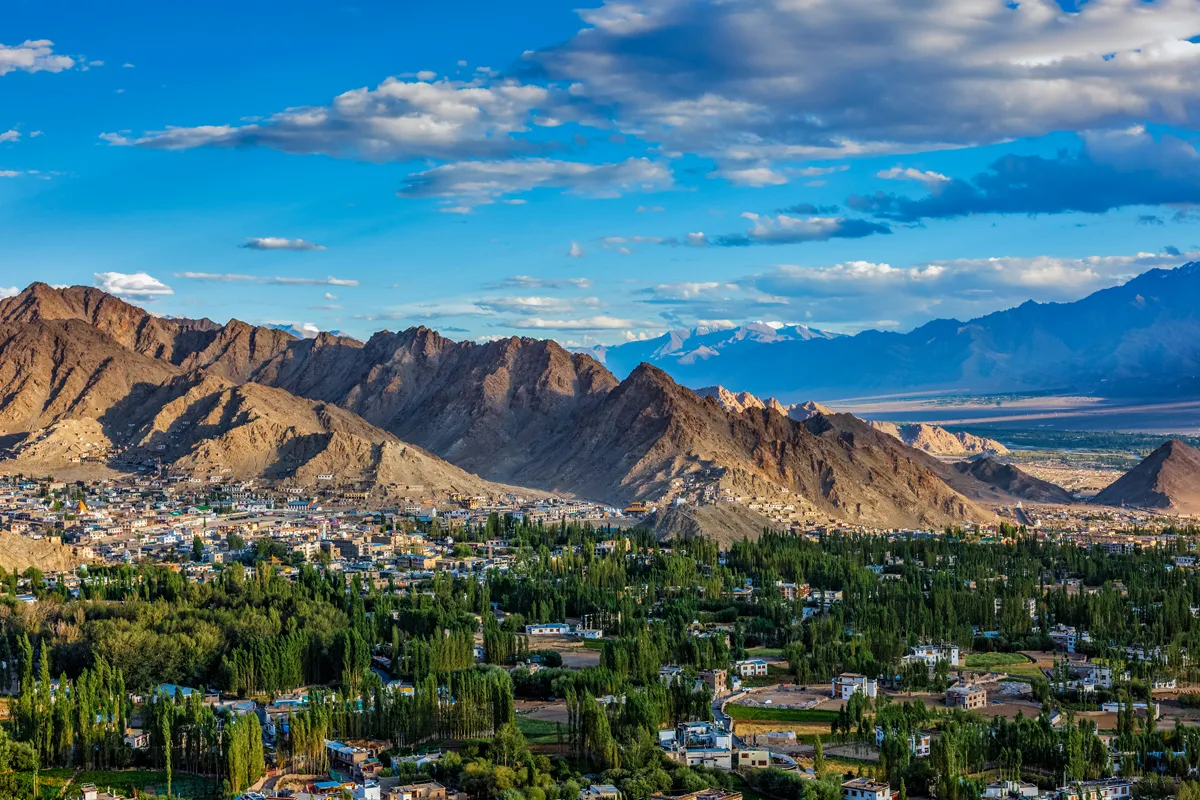Motorcycle Tour
Ladakh
Manali to Leh
Your two week motorcycle adventure tour in the Himalayas of Ladakh is designed in such a way that you spend all of your riding time in the Himalayan mountains and none on heavily trafficked highways. All night halts will be at well-appointed hotels or campsites with attached toilets. For most part of the tour you will be riding above 13,000 feet. Since the high altitude and lack of oxygen limit the body on how much it can exert itself, the tour is designed in such a manner that each day’s ride is comfortable enough for you to feel fresh to hit the road the next morning.
Tour Dates
Arrive in Manali
Plan to arrive in Manali by noon. Upon arrival, you will be checked into a hotel where you will meet the Ride of My Life team and your fellow riders. The road captain will brief everyone on the route and day-by-day plan. After the briefing, you will receive the keys to your Royal Enfield Himalayan motorcycle, giving you the freedom to make your own plans in the scenic town of Manali. If any adjustments to the motorcycle are needed, our skilled mechanic will be on hand to assist you.
Manali to Jispa
In the morning, we set out on the Manali-Leh highway, the world’s highest road. We head north from Manali towards the newly-constructed Atal Tunnel, the longest tunnel above 10,000 feet in the world, stretching 9 km. Exiting the tunnel, marvel at the changing landscape in the Chandra valley, which becomes increasingly rugged as the mountains grow taller. Ride along the mighty Chenab river in the valley and arrive at Tandi, where the Chandra and Bagha rivers converge to form the Chenab. Tandi is the last fuel stop for the next two days, as the roads ahead are closed during the winter months. We follow the Bagha river to Jispa, a charming village surrounded by magnificent mountains, and spend the night at a hotel.
Jispa to Padum
Today, experience the transformation from lush green landscapes to the barren moonscape that Ladakh is famous for. Enjoy a picturesque ride past small lakes, waterfalls, and streams. Tackle your first high-altitude pass, Baralach La, reaching 16,500 feet, and ride down to Sarchu, a high-altitude plateau surrounded by dramatic landscape. We spend the night at Sarchu, where comfortable Swiss tents with attached toilets will be your accommodation.
Padum to Leh
Plan to arrive in Manali by noon. Upon arrival, you will be checked into a hotel where you will meet the Ride of My Life team and your fellow riders. The road captain will brief everyone on the route and day-by-day plan. After the briefing, you will receive the keys to your Royal Enfield Himalayan motorcycle, giving you the freedom to make your own plans in the scenic town of Manali. If any adjustments to the motorcycle are needed, our skilled mechanic will be on hand to assist you.
Leh
In the morning, we set out on the Manali-Leh highway, the world’s highest road. We head north from Manali towards the newly-constructed Atal Tunnel, the longest tunnel above 10,000 feet in the world, stretching 9 km. Exiting the tunnel, marvel at the changing landscape in the Chandra valley, which becomes increasingly rugged as the mountains grow taller. Ride along the mighty Chenab river in the valley and arrive at Tandi, where the Chandra and Bagha rivers converge to form the Chenab. Tandi is the last fuel stop for the next two days, as the roads ahead are closed during the winter months. We follow the Bagha river to Jispa, a charming village surrounded by magnificent mountains, and spend the night at a hotel.
Leh to Tso Moriri
Plan to arrive in Manali by noon. Upon arrival, you will be checked into a hotel where you will meet the Ride of My Life team and your fellow riders. The road captain will brief everyone on the route and day-by-day plan. After the briefing, you will receive the keys to your Royal Enfield Himalayan motorcycle, giving you the freedom to make your own plans in the scenic town of Manali. If any adjustments to the motorcycle are needed, our skilled mechanic will be on hand to assist you.
Tso Moriri to Hanle
In the morning, we set out on the Manali-Leh highway, the world’s highest road. We head north from Manali towards the newly-constructed Atal Tunnel, the longest tunnel above 10,000 feet in the world, stretching 9 km. Exiting the tunnel, marvel at the changing landscape in the Chandra valley, which becomes increasingly rugged as the mountains grow taller. Ride along the mighty Chenab river in the valley and arrive at Tandi, where the Chandra and Bagha rivers converge to form the Chenab. Tandi is the last fuel stop for the next two days, as the roads ahead are closed during the winter months. We follow the Bagha river to Jispa, a charming village surrounded by magnificent mountains, and spend the night at a hotel.
Hanle
In the morning, we set out on the Manali-Leh highway, the world’s highest road. We head north from Manali towards the newly-constructed Atal Tunnel, the longest tunnel above 10,000 feet in the world, stretching 9 km. Exiting the tunnel, marvel at the changing landscape in the Chandra valley, which becomes increasingly rugged as the mountains grow taller. Ride along the mighty Chenab river in the valley and arrive at Tandi, where the Chandra and Bagha rivers converge to form the Chenab. Tandi is the last fuel stop for the next two days, as the roads ahead are closed during the winter months. We follow the Bagha river to Jispa, a charming village surrounded by magnificent mountains, and spend the night at a hotel.
Hanle to Pangong Tso
Plan to arrive in Manali by noon. Upon arrival, you will be checked into a hotel where you will meet the Ride of My Life team and your fellow riders. The road captain will brief everyone on the route and day-by-day plan. After the briefing, you will receive the keys to your Royal Enfield Himalayan motorcycle, giving you the freedom to make your own plans in the scenic town of Manali. If any adjustments to the motorcycle are needed, our skilled mechanic will be on hand to assist you.
Pangong Tso to Sumur
In the morning, we set out on the Manali-Leh highway, the world’s highest road. We head north from Manali towards the newly-constructed Atal Tunnel, the longest tunnel above 10,000 feet in the world, stretching 9 km. Exiting the tunnel, marvel at the changing landscape in the Chandra valley, which becomes increasingly rugged as the mountains grow taller. Ride along the mighty Chenab river in the valley and arrive at Tandi, where the Chandra and Bagha rivers converge to form the Chenab. Tandi is the last fuel stop for the next two days, as the roads ahead are closed during the winter months. We follow the Bagha river to Jispa, a charming village surrounded by magnificent mountains, and spend the night at a hotel.
Sumur to Leh
Today, brace yourself for the ultimate adventure as you tackle the highest motorable pass in the world – Khardung La. Standing at a staggering 18,380 feet, this pass is a true test of strength and endurance. But fear not, the road ahead is also one of the smoothest you\’ll encounter on this journey. As you ascend the pass, you\’ll be surrounded by grand and majestic landscapes that will leave you in awe. And after a steep and challenging climb, you\’ll reach the summit of Khardung La, where you can celebrate your achievement with your co-riders. The descent back to Leh is just as thrilling, offering a chance to take in the breathtaking views once more.
Departure from Leh
Today marks the end of an unforgettable adventure through the heart of the Himalayas. With memories of stunning scenery, thrilling rides, and new friendships made, it\’s time to pack up and head back home, already planning your next adventure. Say goodbye to the mountains, and hold onto the memories of this incredible journey.
Ladakh means the land of high passes. The mountain ranges of Ladakh, with 16,000 to 23,000 feet high peaks, were formed over a period of 45 million years by the folding of the Indian plate into the more stationary Eurasian plate. Ladakh lies in the state of Jammu and Kashmir, the northern-most state of India. It is sometimes called “Little Tibet” as it has been strongly influenced by Tibetan culture. Historically, Ladakh was a strategic location at the crossroads of important caravan routes, eventually leading to the Silk route. The Ladakh region was opened to tourism only in 1974 and it is only after then that outsiders came to know about the beautiful landscape of Ladakh and the rich culture of the Ladakhi people.
People
Ladakh has a blend of many different ethnic groups; predominantly, Tibetans and Mons. Most Ladakhis in Leh district and Zanskar are Tibetan Buddhists. The Changpa nomads who live in the Changthang plateau are more closely related to Tibetans.
Terrain
Ladakh is bound by mountains and made up of mountains. From November to May, Ladakh is almost completely cut off from the outside world. Even in summer, getting here involves crossing the highest mountain passes in the world. The journey by no means is easy, but the highest roads in the world here are termed as the best riding destination in the world. From the millions of years of permanence, the Himalayas make the journey to Ladakh different and unpredictable every year. It is anybody’s guess on what the road would look like after being covered with feet of snow in winter. Mountain streams, high altitude passes, majestic plains and enormous mountain lakes have left a lasting impression on the lucky ones who have got a chance to travel to this remote Himalayan region.
Weather
Ladakh experiences heavy snowfall in the winter months (November to February) and the temperature can dip unto -35 degree Celsius. Summers are short (May to August) and the weather is dry and pleasant. Temperature in summer ranges from -5 to 35 degree celsius. The region receives very little rainfall, but when it does, it makes the whole affair of riding a motorcycle very cold. Hence thermal inner wear and waterproof riding gear is a must for a trouble free ride in Ladakh.
Flora and Fauna
Ladakh has a fragile eco-system which sustains, besides the sparse population, some rare fauna and flora which are especially adapted to the peculiar environment. Among Ladakh’s most important fauna are the Ladakhi Urial, Blue sheep, Lynx, Red Fox, Siberian Ibex, Snow Leopard, Tibetan Antelope, Tibetan Argali, Tibetan Gazelle, Tibetan Wild Ass, Tibetan Wolf and the Wild Yak. And among its many indigenous and visiting wetlands birds the sight of the endangered Black-necked Crane is considered very auspicious by Ladakhis. Although wildlife sighting is a matter of luck, sightings of Blue Sheep and Tibetan Wild Ass are common. For avid bird watchers, it would be a treat to see abundant species at the Pangong tso lake.
For more information on Ladakh, visit the official website or the Wikipedia page.
Frequently Asked Questions
Here is a list of frequently asked questions. If your question is not in this list, just contact us.
